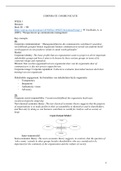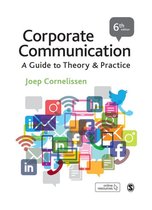Resume
Samenvatting Corporate Communication (AY)
- Cours
- Établissement
- Book
Samenvatting van de aantekeningen van het vak Corporate Communication op de UvA en het bijbehorende boek "Corporate Communication" van Cornelissen (ISBN: 1978). Met deze samenvatting heb ik een 8,5 gehaald op het tentamen.
[Montrer plus]




